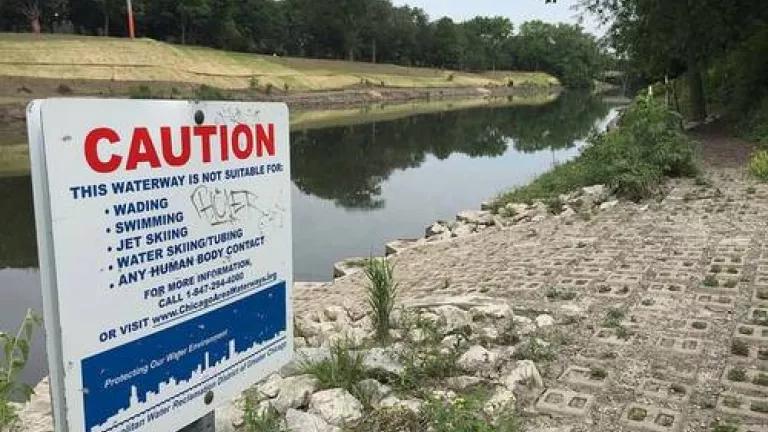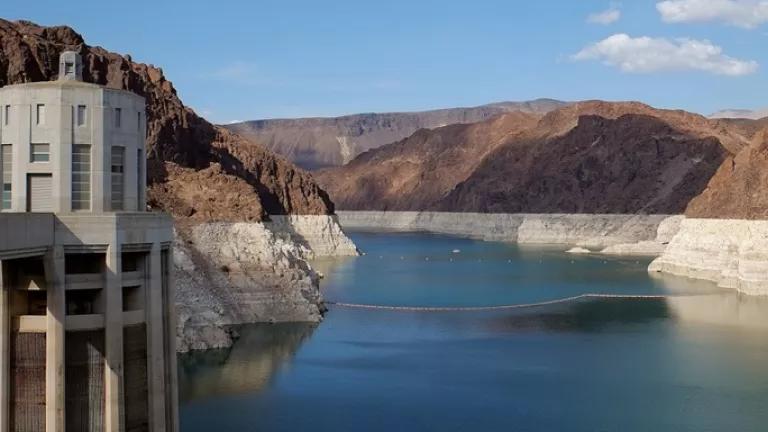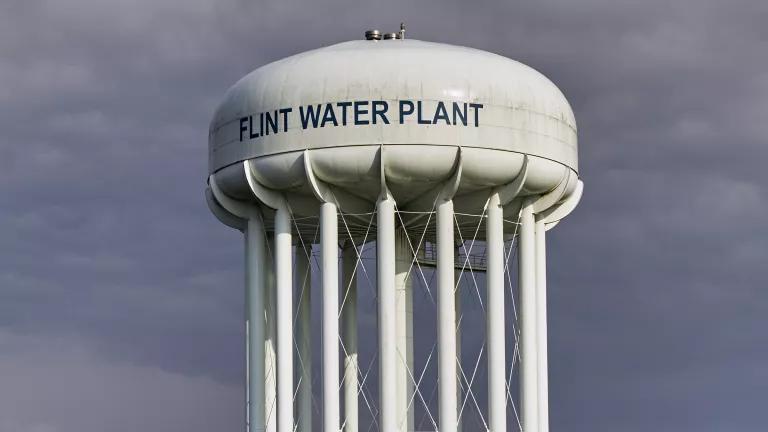
Cleaning up the Chicago River feels a bit like kicking a rubber mattress up a hill - slow and maddening. That feeling is bolstered by the Chicago Tribune's investigative piece published yesterday rather scarily titled, "Chicago River still teems with fecal bacteria, tests show." While reporter Michael Hawthorne notes that the Metropolitan Water Reclamation District will implement disinfection at all three of its Chicago River facilities by the end of this year, a positive step forward, these actions still will not fix the problem of the raw sewage that flows into the river after every rainstorm. The Trib underscores the ick factor with a local resident's observation that after the rain, "it looks like a crust of feces on the water." Exactly.
What an eloquent, and frustrating, snapshot of the River, which our Mayor has described as Chicago's "backyard." It reflects an equally frustrating history of how we got here. Requiring Chicago's sewage treatment plants to disinfect their effluent may sound like the ultimate no-brainer. But the Water Reclamation District over the years resisted this basic civilized step amazingly hard. Unabashed by the fact that Chicago is just about the only place anywhere in the country that doesn't disinfect after sewage treatment, the District's previous executive director fought tooth and nail against the proposal to disinfect the waste, advanced by the Illinois EPA in 2008. NRDC, which participated actively in the hearings before the Pollution Control Board over the proposal, spent countless attorney hours and tens of thousands of dollars to bring in epidemiologists to testify that, yes, in fact, germs and fecal matter are bad for people and something should be done about them. The situation finally turned around in 2010 when US EPA, which had been sitting more or less on the sidelines watching this circus unfold, finally stepped in and reminded the District that the Clean Water Act requires working toward a goal of fishable and swimmable waters, and the Chicago River is no exception.
But disinfection only treats the effluent that comes out of the sewage treatment plants themselves. While it's obviously critical to do that, disinfection does not get at the problem of "combined sewer overflows" in the District's system, which is the technical term for dumping raw sewage into the water before it ever even reaches the treatment plants. Chicago's sewer system is designed to convey both sanitary sewage (like the stuff from your flushed toilet) and storm water to the plants for treatment. Which works great until we get about 2/3 of an inch of rainfall, at which point the system is overwhelmed and begins dumping massive volumes of the combined sewage and stormwater directly into the river. In case you were wondering where that "crust of feces" might come from.
NRDC has fought hard to bring the combined sewer overflows under control as well, but with a little less progress so far. We brought suit in 2011, together with our coalition partners, seeking an order requiring that the District curb the water quality standards violations caused by the overflows. The effect was to get US EPA - which had been negotiating with the District over these violations for more than a decade - off the dime to file its own suit. Which sounds like good news; except its not. EPA's lawsuit was accompanied by an immediate consent decree settlement of its claims, which essentially rubber-stamped the status quo. The District has been trying to address the sewage overflows since the early 1970s with an ongoing $3-billion-and-counting tunnel and reservoir project ("TARP"), which even the District has admitted in candid moments is probably not going to fix the problem. Not only that, but EPA even rubber stamped the District's history of endless delays (TARP was originally supposed to be completed in 1982). The Agency gave the District ages -- until 2029 -- to finish TARP, but then built in an allowance for things to move even more slowly, pre-authorizing delays so long as the District expends a small pittance toward other solutions. EPA's deal took a superficial swipe at implementing "green infrastructure" solutions, which is the modern rational engineering approach of keeping water out of the system altogether with green roofs and rain gardens and the like (explained more fully in this NRDC report), but came nowhere close to the full-on green infrastructure solutions being implemented in cities like New York and Philadelphia. NRDC and its partners intervened in EPA's lawsuit in order to try to overturn the Consent Decree, but we faced a tough legal standard, and didn't win that battle.
So here we are, in 2015, still a world-class city with a third-world river running through it. To those of us who have worked for years to turn the situation around, it remains massively exasperating. We are inspired by what other cities like Boston, Baltimore, Philadelphia and San Antonio have done with their public water resources, and long to see the same level of care and enthusiasm directed toward "Chicago's back yard." Unfortunately, until we demand that the Chicago sewage system meet standard requirements of a modern civilization, the people of Chicago, and the others who live along the Illinois River, the Mississippi River, and the shores of lower Lake Michigan, will have the dubious pleasure of sewage, germs and filth floating by their homes, offices, parks, and drinking water intake plants.




